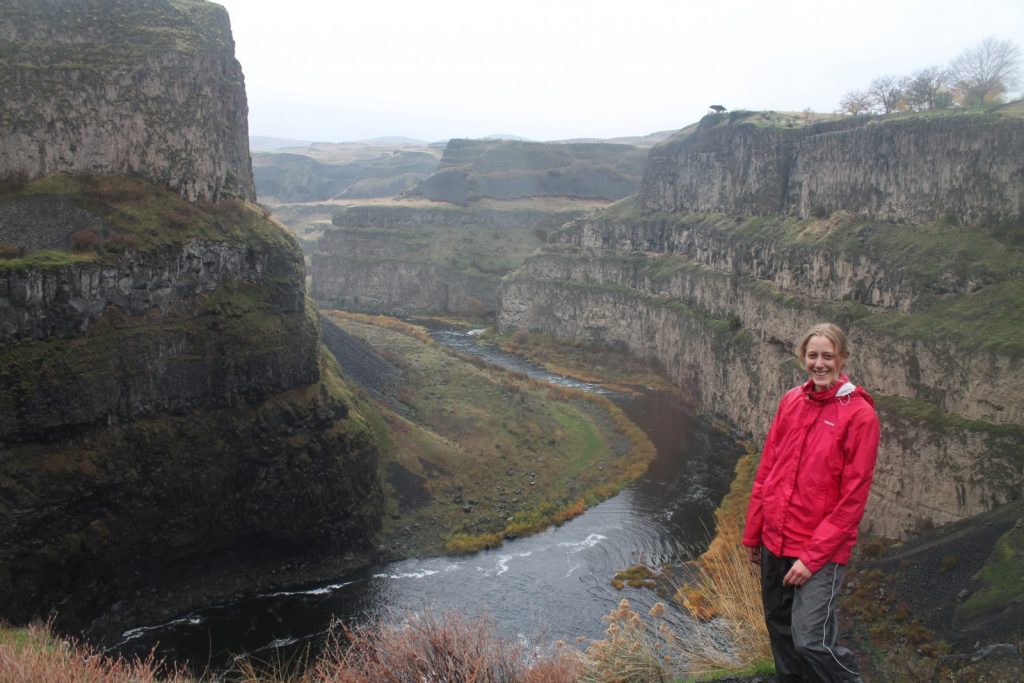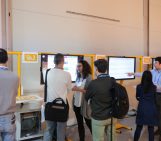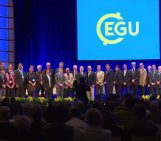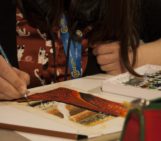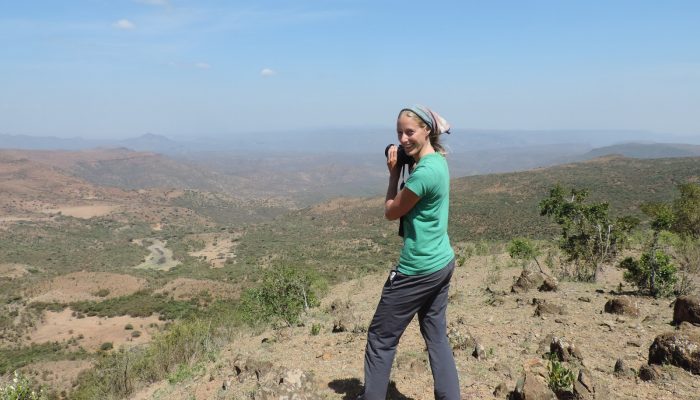
In addition to the usual GeoTalk interviews, were we highlight the work and achievements of early career scientists, this month we’ll also introduce one of the (outgoing) Division early career scientist representatives (ECS). The representatives are responsible for ensuring that the voice of EGU ECS membership is heard. From organising short courses during the General Assembly, through to running division blogs and attending regular ECS representative meetings, their tasks in this role are varied. Their work is entirely voluntary and they are all active members of their research community, so we’ll also be touching on their scientific work during the interview.
Today we are talking to Alena Ebinghaus, ECS representative for the Stratigraphy, Sedimentology and Palaeontology (SSP) Division. Alena has been in post for more than 20 months, but her term comes to an end at the 2019 General Assembly. Interested in getting involved with EGU and its activities for early career scientists? Consider applying for one of the vacant representative positions.
Before we get stuck in, could you introduce yourself and tell us a little more about yourself and your career?
I was fascinated by geology long before I started studying, and it was volcanoes that got me hooked initially. Being originally from Hagen in Germany, I went to study geology and palaeontology at the Rheinische Friedrich-Wilhelms Universität in Bonn, from which I obtained a Diploma (=MSc) degree in 2010. I continued with a PhD at the University of Aberdeen, in the UK, where I focused my research to inter-lava drainage and plant ecosystems in the Columbia River Flood Basalt Province (USA). I haven’t settled my studies in volcanology after all, but sedimentological and palynological (largely pollen and spores) studies set in a volcanic environment was the perfect balance for me.
I am still based in Aberdeen, and since 2014 employed as a postdoctoral researcher. Now my main research projects are the assessment of sedimentary and plant ecological response patterns to rapid climate change of the past. I look at sedimentary rock records from the Cretaceous–Paleogene Boltysh meteorite impact crater (Ukraine) and the Palaeocene–Eocene Bighorn Basin (Wyoming). These two locations were witness to rapid warming events and hold geological clues to how the environment responded to these changes.
Although we touch upon it in the introduction of this post: what does your role as ECS representative involve?
The ECS representative is the anchor point between the early career researchers and later career researchers. Within the SSP community I communicate the matters and interests of the ECS to the SSP division and the wider EGU community, and help to connect the work and engagements of early stage scientists with those of a later career stage. With the help of a small group of other ECS, I coordinate and take care of the SSP social media Facebook and Twitter accounts. I also try to set up social events and help organize short courses during the annual General Assembly (GA). In the particular case of the SSP division, I have coordinated the set-up of the division’s weblog.
Why did you put yourself forward for the role?
I was keen to get involved and integrate with the SSP community and the EGU in order to widen my academic network and to become a more interactive GA participant. The GA is a large conference – I wanted to have the opportunity to meet a lot of people and help organize events rather than being a somewhat passive attendant.
What is your vision for the Stratigraphy, Sedimentology and Palaeontology Division ECS community and what do you hope to achieve in the time you hold the position?
I see the SSP growing further and particularly the ECS community becoming more inter-active with organizing SSP-specific scientific and social events similar to some of the larger divisions within the EGU. The first couple of times I joined the GA I felt rather lost, and was not quite aware of ECS work, nor did I meet other SSP ECS. Bringing the SSP ECS community together and making their engagements more visible so to better approach other ECS is one of main objectives.
What can your ECS Division members expect from the Stratigraphy, Sedimentology and Palaeontology Division in the 2019 General Assembly?
First of all, the SSP division again offers again a great range of scientific sessions, but I am also planning a couple of social get-togethers which shall be particularly interesting for those attending the GA for the first time. As every year, there will be the opportunity to meet the SSP president and to join the division’s meeting which is open to all SSP members. With a group of other academics, I will be convening a short course to discuss the balance of work and personal life in science – a topic addressed to researchers of all career stages within SSP and naturally beyond.
How can those wanting to, get involved with the EGU?
For everyone being interested in SSP work, it would be best to either get in touch with myself, via email or Facebook or the SSP president. We will be more than happy to assist and answer any questions.
Interview by Olivia Trani, EGU Communications Officer

